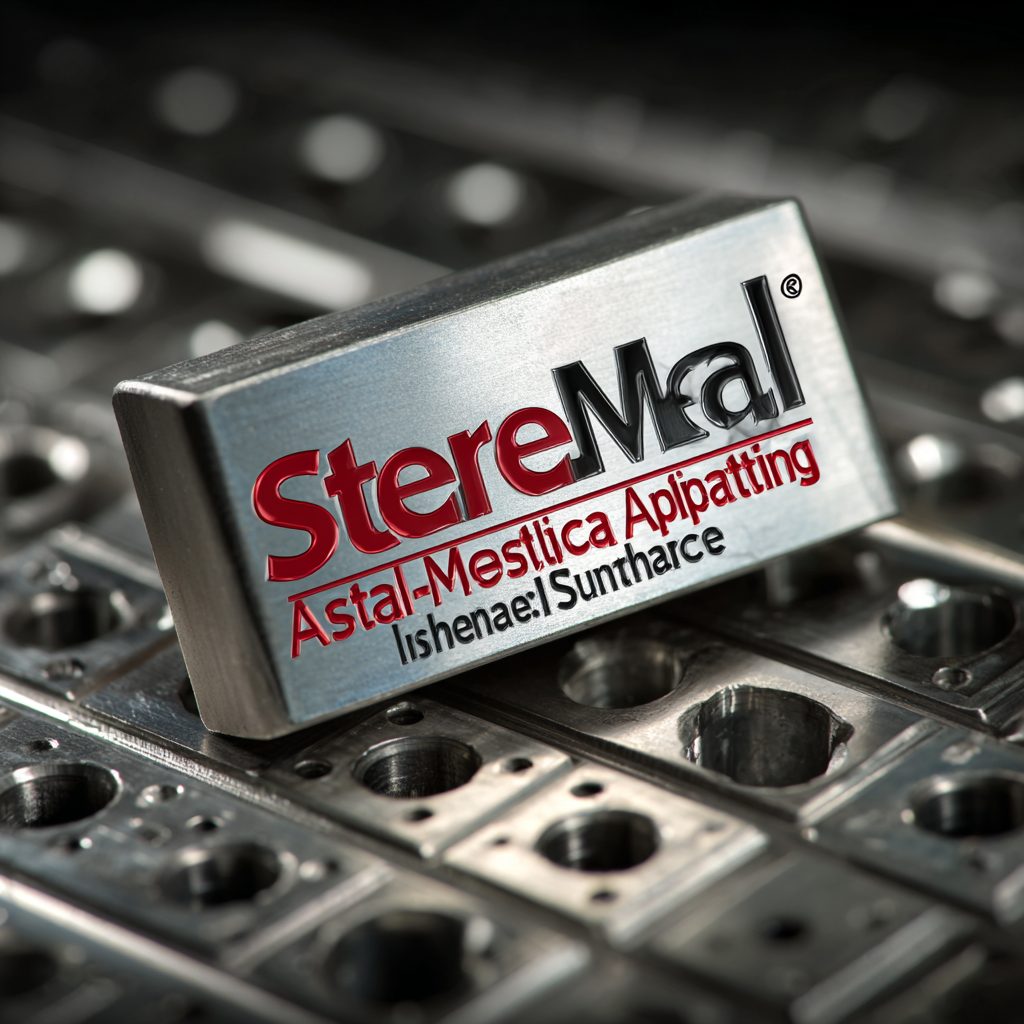Innovative Applications of Best Sheet Metal Stamping in Aerospace Manufacturing
The aerospace manufacturing industry has witnessed a significant transformation in recent years, driven by advancements in technology and the increasing demand for lightweight, durable components. Among these innovations,
sheet metal stamping has emerged as a critical process, facilitating the production of complex parts with high precision and efficiency.
According to a report by MarketsandMarkets, the sheet metal market in aerospace is projected to reach $4.5 billion by 2025, reflecting a compound annual growth rate (CAGR) of 6.1% from 2020.
This blog explores the innovative applications of best sheet metal stamping practices in aerospace manufacturing, highlighting not only the industry's stringent import and export certifications but also offering a tutorial on optimizing these processes to meet evolving market demands.
As manufacturers strive to enhance performance while reducing costs, the role of sheet metal stamping becomes increasingly vital, serving as a backbone for the development of cutting-edge aerospace technologies.

Emerging Technologies Transforming Sheet Metal Stamping in Aerospace
The aerospace manufacturing sector is being revolutionized by emerging technologies that enhance the precision and efficiency of sheet metal stamping processes. With the advent of advanced automation and robotics, manufacturers can achieve higher production rates and minimize human error. Automated systems streamline the stamping workflow, allowing for intricate designs that meet stringent aerospace standards. Furthermore, the integration of artificial intelligence in quality control ensures that any defects are detected in real-time, thus improving overall product reliability.
Tip: To maximize the benefits of these technologies, consider investing in training programs for your workforce. Familiarity with new tools and software can significantly optimize the production process and foster innovation within teams.
Additive manufacturing is another key player in transforming sheet metal stamping. By using 3D printing technologies to create prototypes and tooling, manufacturers can shorten lead times and reduce costs associated with traditional machining. This capability not only fosters rapid iteration and design flexibility but also makes it feasible to produce complex geometries that were previously difficult to achieve with conventional methods.
Tip: Collaborate with technology providers to stay ahead in adopting these advancements. Building strategic partnerships can lead to insights into the latest developments, ensuring that your manufacturing processes remain competitive and cutting-edge.
Innovative Applications of Best Sheet Metal Stamping in Aerospace Manufacturing
| Application |
Technology |
Benefits |
Material Types |
Process Innovations |
| Lightweight Components |
Advanced Laser Cutting |
Reduced weight, increased fuel efficiency |
Aluminum, Titanium |
Automated tool path generation |
| Complex Geometries |
3D Printing Integration |
Enhanced design flexibility |
Stainless Steel, Inconel |
Sequential stamping and printing |
| High-Precision Parts |
Computer Numerical Control (CNC) |
Improved dimensional accuracy |
Carbon Steel, High-strength Steel |
Feedback control systems |
| Custom Tooling |
Rapid Prototyping |
Shorter lead times |
Various Alloys |
Digital design and simulation |
| Sustainability Measures |
Recycled Materials Usage |
Lower environmental impact |
Recycled Aluminum, Copper |
Green manufacturing practices |
Key Benefits of Advanced Stamping Techniques in Aircraft Component Production
In the realm of aerospace manufacturing, advanced sheet metal stamping techniques are revolutionizing the production of aircraft components. These innovative applications not only enhance manufacturing efficiency but also ensure superior quality and precision. According to a report by Research and Markets, the global aerospace metal stamping market is projected to reach $9.7 billion by 2027, growing at a CAGR of 5.8%. This growth underscores the increasing adoption of sophisticated stamping technologies in the aerospace sector, where lightweight and durable components are paramount.
One of the key benefits of advanced stamping techniques is the ability to produce complex geometries with minimal waste. Traditional manufacturing methods often resulted in significant material scrap; however, with state-of-the-art stamping presses, manufacturers can achieve higher yields and lower costs. A study by the International Journal of Precision Engineering and Manufacturing notes that companies can reduce material waste by up to 30% when employing advanced stamping methods. Furthermore, the enhanced precision in component design and production translates into improved aerodynamics and overall performance of aircraft, ultimately leading to reduced fuel consumption and operational costs.

Case Studies: Successful Integration of Stamped Parts in Aerospace Projects
In the world of aerospace manufacturing, the integration of stamped parts has proven to be a game-changer. Case studies reveal how leading companies have successfully incorporated innovative sheet metal stamping techniques into their projects. For instance, a prominent aerospace manufacturer recently reduced production time by 30% by implementing advanced stamping processes. This not only improved efficiency but also enhanced the overall precision of the components, crucial for maintaining safety and performance in aviation.
When considering the integration of sheet metal stamping into aerospace projects, it's essential to focus on material selection and design optimization. Choosing high-strength materials can significantly improve the durability of stamped parts while ensuring they meet strict industry standards. Additionally, utilizing simulation software during the design phase can help identify potential issues before production, saving time and resources.
Another vital tip for effective integration is collaboration with suppliers who specialize in aerospace-grade stamped components. Engaging with experienced partners can provide insights into the latest technologies and best practices in manufacturing, ensuring your project benefits from cutting-edge innovations. By fostering strong partnerships, companies can leverage shared expertise to drive successful outcomes in their aerospace endeavors.
Sustainability in Aerospace: The Role of Efficient Metal Stamping Practices
In recent years, the aerospace industry has increasingly prioritized sustainability, and efficient metal stamping practices have emerged as a pivotal component of this shift. By optimizing sheet metal stamping processes, manufacturers can significantly reduce material waste and energy consumption, leading to a smaller ecological footprint. This innovative approach not only enhances the overall efficiency of production but also aligns with the industry's commitment to environmental stewardship.
Moreover, advancements in metal stamping technology contribute to recycling efforts within aerospace manufacturing. By employing techniques that allow for better material utilization, manufacturers can repurpose leftover materials, minimizing the need for new resources. This circular approach not only conserves valuable materials but also promotes a sustainable ecosystem within the industry. As the aerospace sector continues to embrace these efficient practices, the dual goals of enhancing product performance and minimizing environmental impact become increasingly attainable.
Innovative Applications of Best Sheet Metal Stamping in Aerospace Manufacturing
This chart illustrates the material usage percentage in aerospace manufacturing processes where sheet metal stamping is employed. It highlights the prominence of aluminum and titanium, showcasing their efficiency and sustainability in the aerospace sector.
Future Trends: Innovations Driving the Evolution of Aerospace Stamping Processes
As the aerospace manufacturing industry continues to evolve, innovative applications of sheet metal stamping are playing a pivotal role in enhancing efficiency and performance. The future trends in aerospace stamping processes highlight a shift towards automation and advanced materials. With the integration of robotics, manufacturers can achieve higher precision and speed, significantly reducing production times while maintaining quality. This shift not only streamlines operations but also allows for the fabrication of complex geometries that meet the demanding specifications of modern aircraft.

Moreover, the adoption of lightweight materials like aluminum and titanium in stamping processes is revolutionizing aerospace manufacturing. These materials offer superior strength-to-weight ratios, contributing to improved fuel efficiency and overall aircraft performance. Innovations such as digital twin technology and machine learning are also being leveraged to optimize stamping techniques, allowing manufacturers to predict potential issues and enhance the design process. As these trends continue to develop, they promise to reshape the landscape of aerospace manufacturing, making it more efficient, sustainable, and innovative.